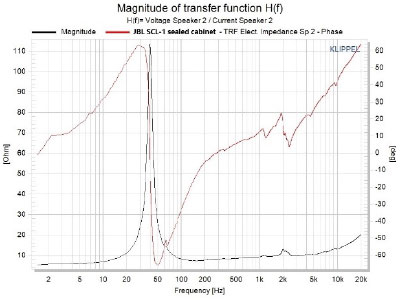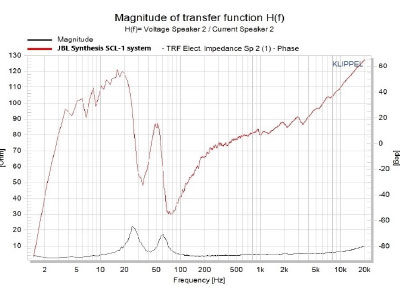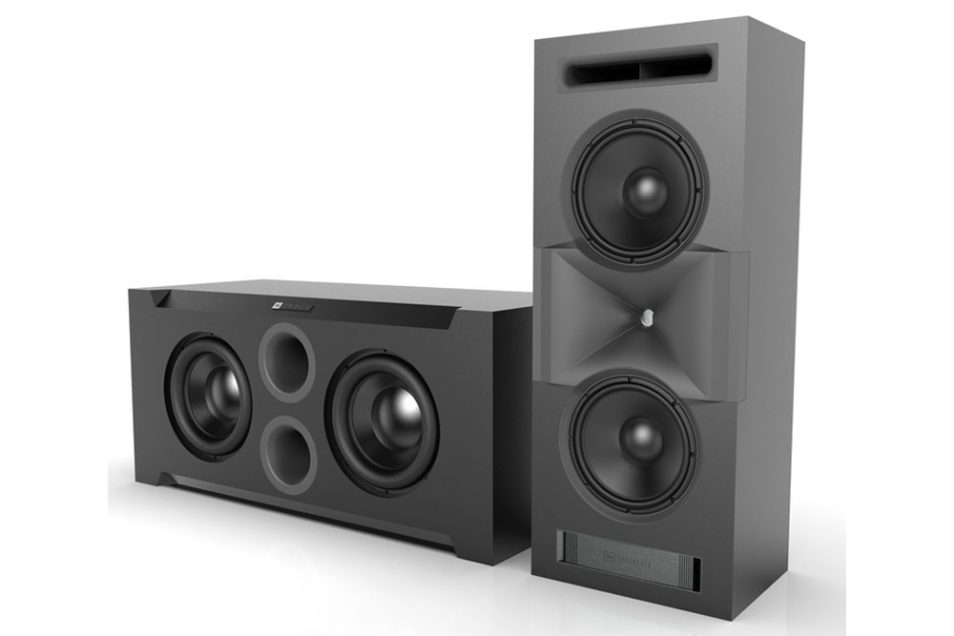Tech Talk
U.S. Patent Number 10531181: What is it and why is it important?
By Chris Hagen, Principal System Engineer
U.S. Patent Number 10531181 is a mouthful, but if you are a Synthesis installer working with the premium models, then you already have heard another name for it. This name is CBAS and it is one of the JBL Synthesis SCL-1’s many technological advances. This HARMAN patent can be used with any size driver to produce beneficial outcomes and so the patent is called the Complementary Driver Alignment. But since the SCL-1 employs it for its bass drivers it is called Complementary Bass Alignment System for the SCL-1, or CBAS for short.
The complementary driver alignment originated with a desire to combine two speakers in two different alignments to result in a third, superior alignment. Basically, it was the acoustic engineer saying, “I want the bass extension of a sealed box with the sensitivity or punch of a ported system”. The key to the design is in the mating of the two resonant impedance signatures of the combined systems. Although a similar-looking design was used earlier by HARMAN in the JBL Project K2 S9500 system and its “offspring”, those systems were designed around two ported systems, one an over-damped alignment and the other with a small amount of ripple. Tuning of those systems is about 10 to 20 percent different from each other, whereas complementary driver alignment would point towards anywhere from a zero to 50 percent difference and can be any type of alignment, depending on the impedance characters of the two systems that are being blended. For example, in the SCL-1, the two systems are tuned to the same frequency (zero percent change) and one cabinet is sealed and the other ported.
This tuning technique is of interest since virtually all speakers developed have either: (1) a single driver in its cabinet, (2) multiple drivers in one cabinet sharing one alignment, or (3) multiple attached cabinets of the type in (1). So, all drivers share the same alignment one way or another. In these designs, the driver is simply designed so that the number used with the wiring chosen produces an impedance above 4 Ohm.
In the complementary driver alignment system (or CBAS), a peak in one system is aligned to a minimum in the other system(s). Neither the drivers nor the cabinet alignments must be the same. The cabinets will be acoustically separate of unique alignment. This explains why the SCL-1 port is so small – it only ports the upper 12” woofer cabinet. The lower woofer in the SCL-1 is in a sealed cabinet.

So, what does this patent research do for the SCL-1? First off, it delivers the frequency response goal with an 18 dB per octave low frequency roll-off:

JBL Synthesis SCL-1 axial, 2.83V


The impedance is the black curve, and it ranges from about 8 Ohm to 115 Ohm in the sealed cabinet and to 125 Ohm in the ported cabinet. The red curve represents the impedance phase angle and varies from -65 degrees to +65 degrees for each. Combined in the SCL-1’s CBAS design, we can see that the impedance variation reduces massively, ranging from 4 Ohm to about 25 Ohm, and phase angle is reduced to -55 to +55 degrees, a much easier amplifier load:

Lastly, the SCL-1 benefits from a “smart” power steering phenomenon. Sealed systems can handle their rated power at all frequencies, but ported systems can have issues with excessive power below their tuning frequency. Also, high impedance electrical circuits resist current flow and thus power. In the SCL-1, the CBAS alignment results in the ability for either woofer to push power onto the other, due to the relative impedance of the woofer systems at a given frequency. Looking above at the impedance curves of each cabinet, you can see that the sealed cabinet will do this one time – at the resonance of the ported cabinet – pushing power to the ported cabinet at the frequency that the ported cabinet can handle large quantities of power.
The ported cabinet will have an impedance peak above tuning and below it. Above tuning is not so interesting, but below tuning is where the ported system is weakest. This lower impedance peak is at the frequency that easily bottoms a ported system. And at that frequency, the higher impedance of the ported system will push the power to the sealed cabinet, allowing the SCL-1 to handle much more power. Without the sealed system at a lower impedance, the ported system would react like a normal speaker system and potentially bottom out the voice coil. With the sealed system to absorb the power, the overall system can handle much more power.
With the multiple ways that the CBAS alignment helps the SCL-1 – bass extension, minimizing impedance variation, minimizing phase angle, and the steering of power – it is not surprising that it is getting rave reviews in its installs. Many who have heard it at the various installations that use it for the LCR speakers have had only praise for its performance. The systems are said to sound “effortless”, “extremely dynamic”, and “very low distortion”.
When we set up a pair of the SCL-1’s with a pair of SSW-1’s in Northridge, we found that the system played to 131.8 dB at 15 feet using very demanding signal…and then the SCL-1 amplifier clipped, stopping any further level gains.
We do plan to push the JBL Synthesis SCL-1 further, but in the meantime, if you get a chance to hear an install with these speakers featured, you owe it to yourself to experience them!

